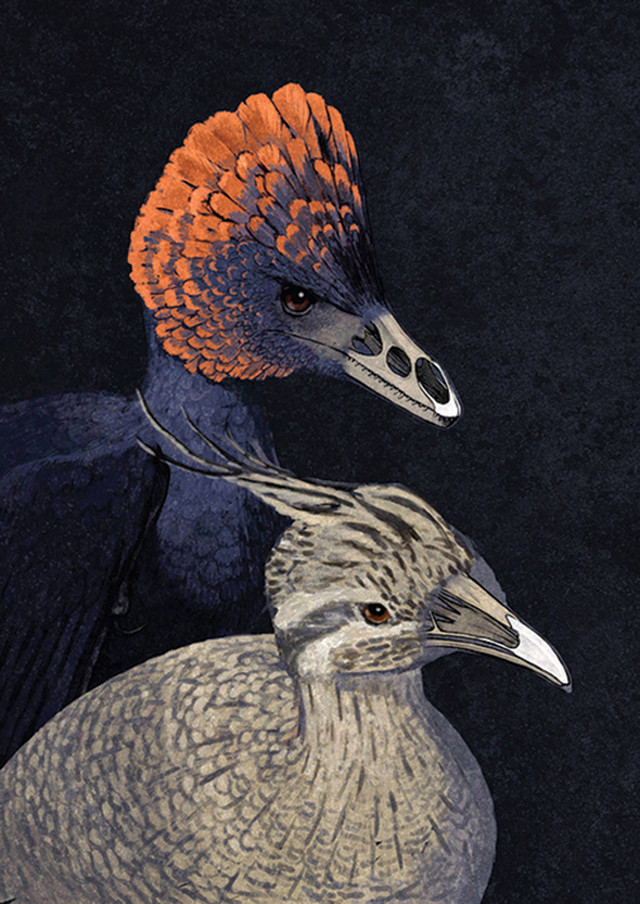
by Mary Caperton Morton Friday, August 21, 2015

An illustration highlighting the premaxillary and palatine bones in the nonavian dinosaur Anchiornis (rear) and a modern tinamou, which belongs to one of the most ancient living orders of birds. Credit: John Conway.
The transition from dinosaurs with snouts to birds with beaks was a pivotal change in the evolution of dinosaurs into birds during the Late Mesozoic. Now, biologists have partially reversed this process by transforming chicken embryos into specimens with snout and palate configurations similar to those of small dinosaurs like Velociraptor and Archaeopteryx.
“Our goal here was to understand the molecular underpinnings of an important evolutionary transition, not to create a ‘dino-chicken’ simply for the sake of it,” said Bhart-Anjan Bhullar, a biologist at Yale University and lead author of a new study in the journal Evolution, in a statement. “The beak is a crucial part of the avian feeding apparatus, and is the component of the avian skeleton that has perhaps diversified most extensively and most radically — consider flamingos, parrots, hawks, pelicans and hummingbirds, among others,” Bhullar said. “Yet little work has been done on what exactly a beak is, anatomically, and how it got that way either evolutionarily or developmentally.”
In the new study, Bhullar and Arhat Abzhanov of Harvard University detail a new method for locating the molecular mechanism underpinning the skeletal changes of the beak. First, they compared the anatomy of related fossils and living animals to better understand the transition from snout to beak. Then, they searched the avian genome for possible shifts in gene expression that may have triggered the transition.
Bhullar said the same approach could be used to investigate the developmental mechanisms of many other major evolutionary transformations, such as the adaptations of dinosaur forelimbs for flight or the transition of marine mammal fins to legs.
© 2008-2021. All rights reserved. Any copying, redistribution or retransmission of any of the contents of this service without the expressed written permission of the American Geosciences Institute is expressly prohibited. Click here for all copyright requests.